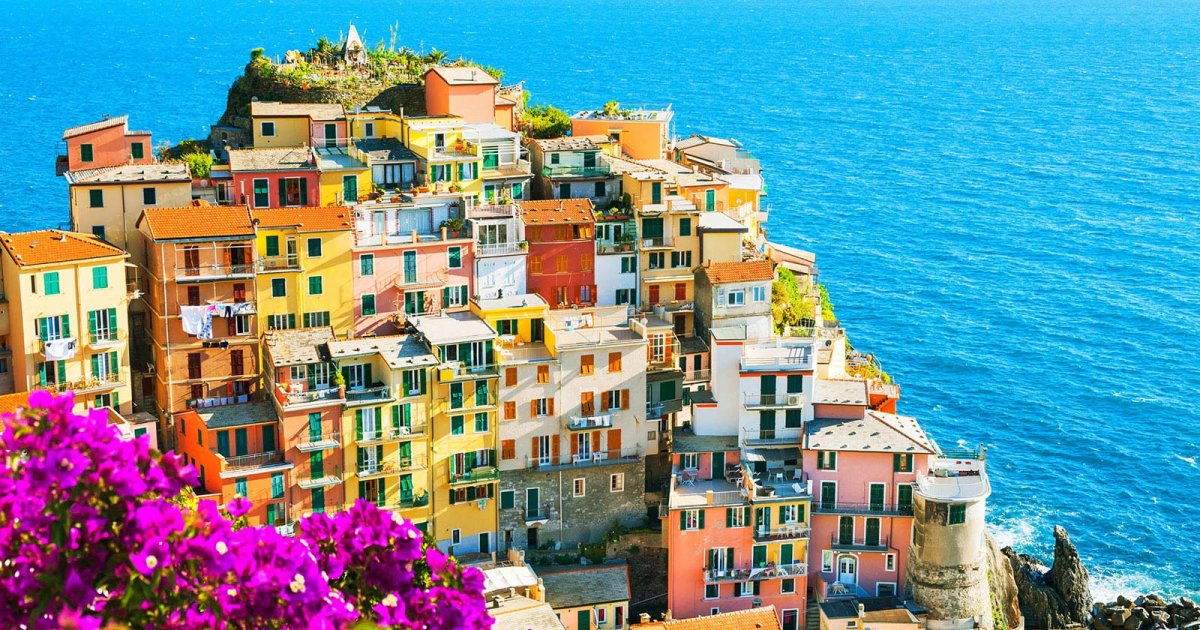MANAROLA, Manarola
 Language: English / USA
Language: English / USA
Hi, my name’s Marcy, and I’m your personal guide. Along with MyWoWo, I’d like to welcome you to one of the Wonders of the World: Manarola.
The name Manarola is believed to derive from the Latin "magna roea", a reference to the large mill wheel you can see along the main street in the center of the village.
In ancient times, such wide streets did not exist. The characteristic, romantic, tower houses and narrow streets were built not just because of the limited space available, but also as a defensive strategy: it was difficult to invade such narrow lanes, barricades could be put up swiftly, and the locals were also able to defend themselves from above.
One of the most interesting buildings here is the church of San Lorenzo, built in 1338 by the people of Manarola and Volastra, a village on the hill, as indicated by a stone marker from the time. The church boasts a splendid rose window with twelve slender radiating columns and, as you can see, the bell tower is separate from the church, because it was originally a watchtower.
The most thrilling, beautiful place in Manarola, however, is the point from which the village looks onto the sea, offering truly magnificent views of the black rock stacks that emerge from the crystal-clear waters.
I suggest you take a walk along the path carved out of the rock, which will take you to the back of a small headland where you can enjoy breath-taking views of Corniglia. At the end of the path, you’ll find a marvelous little bay for fishing boats, where you can go swimming and diving.
The path that once ran between Manarola and Corniglia is now closed due to the landslides caused by the 2011 flood, but you’ll find another, rather challenging one further up, which takes about three hours.
Let me leave you with an interesting fact: in this area, fishing is carried out not only using nets, but also with ancient methods such as the palamiti, long cables with numerous baited hooks hanging from them, kept afloat by buoys, or the nasse, wooden cages built in such a way that the fish can swim in, but cannot swim out. Until just a few years ago, the night sea was lit up by the lampare, boats that attracted fish with large gas lanterns; when the area became a marine park, this type of fishing was banned.



